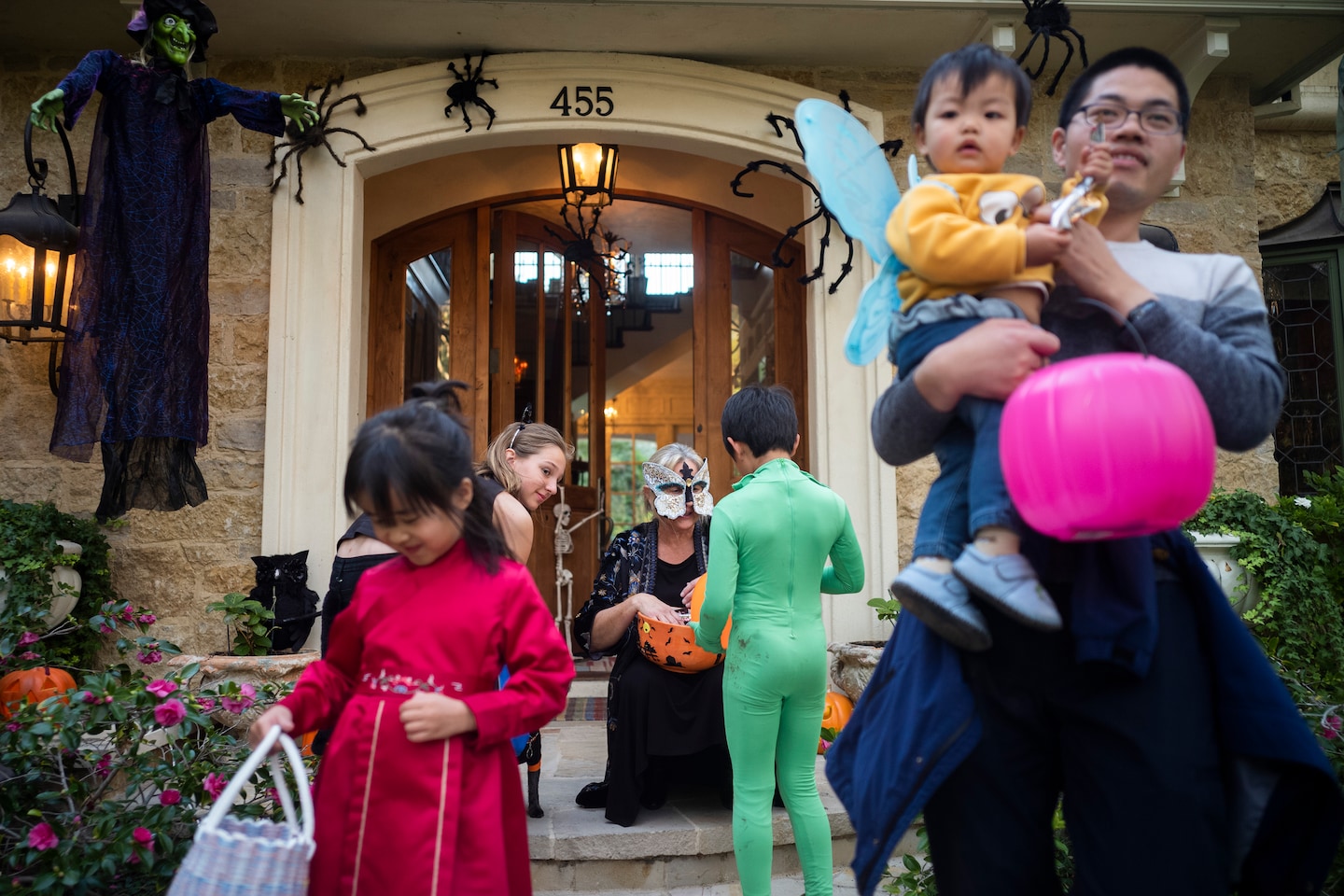Covid-19 doesn’t have to cancel Halloween

As we look ahead to the fall, our country confronts many questions — most of them more important than whether to stock up on Snickers or Twix. But the variety packs of fun-size bars are already on grocery shelves, forcing us to confront Halloween’s immediate future. And the holiday is a big deal in the United States. Americans spend nearly $9 billion a year on Halloween, generating thousands of seasonal jobs. In a year when millions of Americans are unemployed, and our kids are losing out on a lot, many of us are wondering: Will Halloween 2020 have to be canceled?
The answer, happily, is no — if we adopt the right precautions and the right attitude.
Halloween as we know it presents one very big problem: hordes of children reaching into the same candy bins at the same time. Amid the crush, they’ll pull out a candy only to realize it is black licorice, then throw it back, spreading their germs as they fish for something better. Meanwhile, they’re breathing on one another and the adult holding the candy bin. This could potentially contribute to viral spread.
The good news is that everything else about Halloween actually isn’t too frightening, at least from an epidemiological perspective. For the most part, people trick or treat outside. Mask-wearing is central to the celebration. Adults — a higher-risk group — can walk with their children while maintaining social distance, especially if parents arrange for one adult to accompany a larger group of children. It may be challenging — read: impossible — to keep kids completely distanced. But if they’re wearing masks and they’re outside, especially if they’re little, the data indicates the risk of their spreading covid-19 is fairly low.
This suggests a relatively simple solution: individual treats distributed in a socially distanced way. Instead of sitting on the porch with a communal pot of candy, adults can space goodies out on the front steps with a sign that says “Take ONE”; kids can wave and yell “Trick or Treat” and be on their merry way. It’s true that someone has to touch the candies to place them on the stoop, but we now know that the novel coronavirus doesn’t survive well on surfaces, especially outdoors. Anyone really nervous can plan a costume with gloves.
This set-up works well for traditional suburban house-to-house trick-or-treating. More creativity will be required for large apartment buildings, say. But there are still good options. Neighbors can pick a time to celebrate in a nearby park, bring lawn chairs and hot beverages, and set out appropriately spaced individual candies. Kids can migrate from stash to stash collecting their loot. Adding a scavenger hunt dynamic with maps and checklists could make it even more fun. In other communities, people practice “Trunk or Treat” in parking lots. Different residential situations will require different variations, but the point is that many Americans will be able to find a way for their kids to celebrate Halloween safely.
There will be some things we cannot do. The “Heaven and Hell” parties beloved by college students and young adults will probably have to fall by the wayside. And lingering concerns about toilet-paper shortages may affect “Mischief Night.” But the spirit of the holiday can endure.
Of course, Halloween this year will not look exactly the same. Which gets to the crux of what I think many parents are struggling with, emotionally and in other ways. We have expectations for how things will be —Halloween, sure, but also the first day of school, after-school activities, Christmas and so forth. We fondly remember hay rides during fall apple-picking, and we are sad to hear that, even though our kids may still pick apples, the hay rides are canceled. If our kids are going back to school, we cringe at the idea of their wearing masks all day. My son’s fall soccer program just announced that the season is back on, but we’re bummed about limited spectators and fewer games.
In some cases, these changes represent real losses. But there is also a danger of adults overstating these losses, overlooking the good that we’re able to retain and projecting our own disappointments onto our kids.
Kids are adaptable, and changes are not always terrible. Many parents worry, for instance, that masks will stunt children’s understanding of emotions. But on the flip side, there is some evidence that people in East Asian countries, where mask-wearing is routine, grow up to be relatively more responsive to eye cues for emotions than mouth cues.
In the case of Halloween, this year will be different — but that doesn’t mean it won’t be fun. There is nothing that says the only good Halloween requires jamming your hand into a bucket of candy. We adults are committed to a vision. Kids just want a Butterfinger.
Read more:






